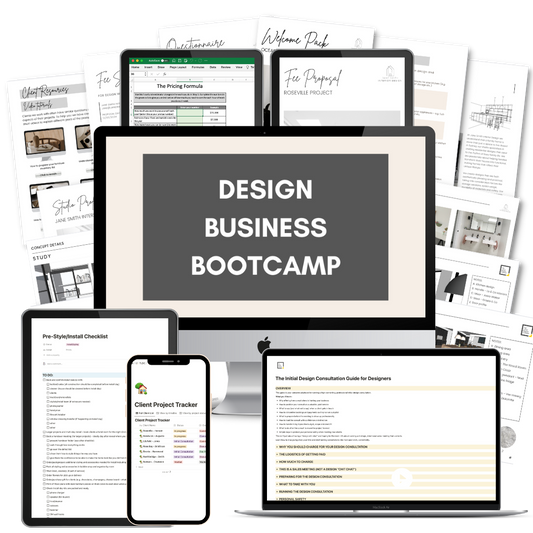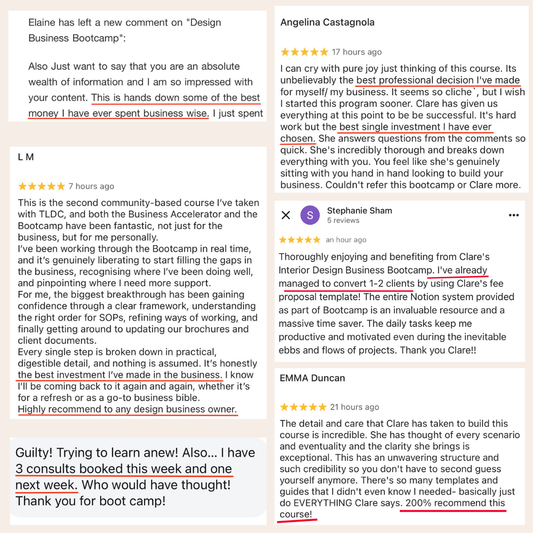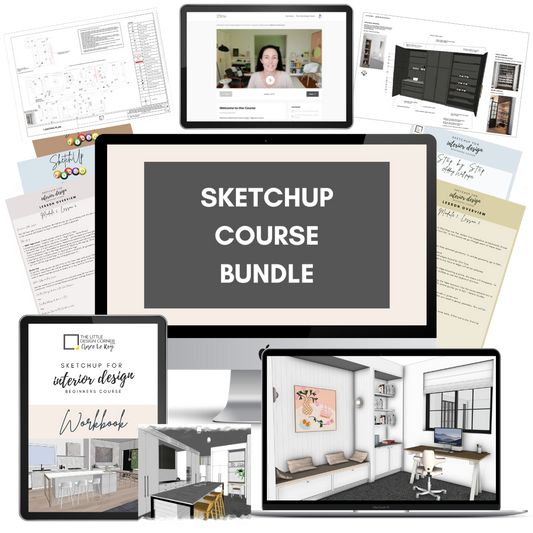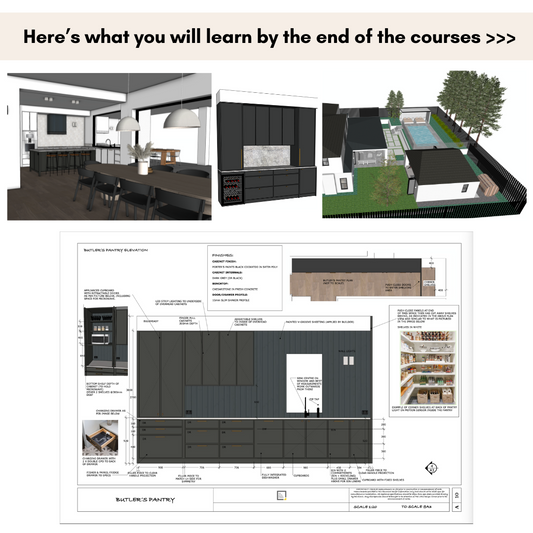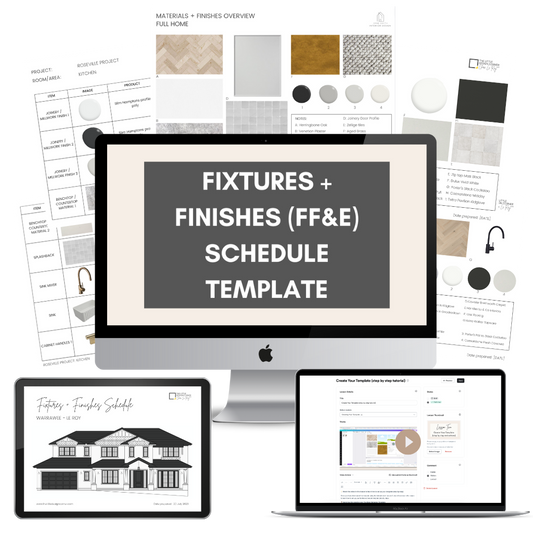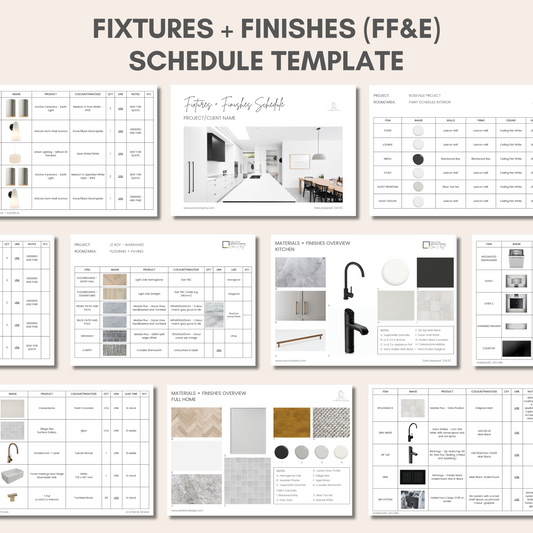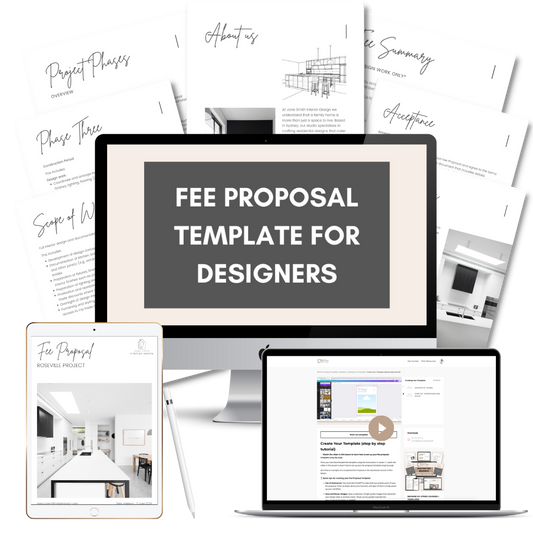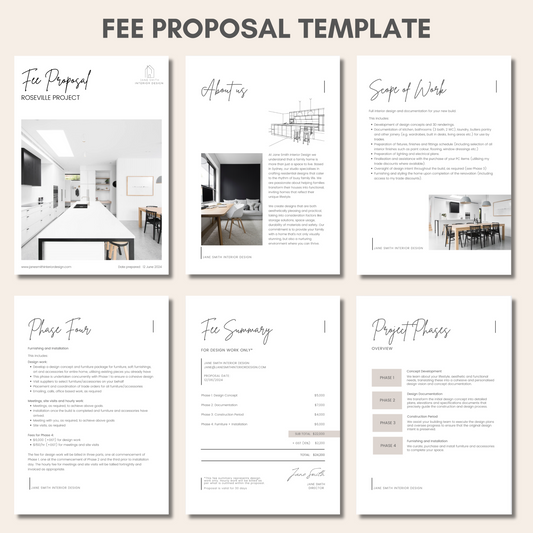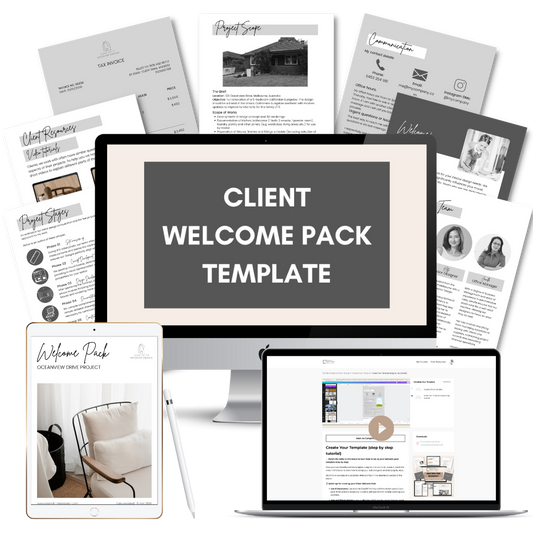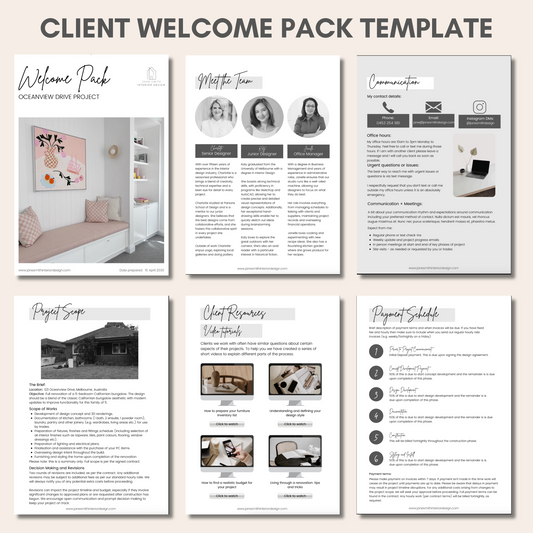Most designers are stuck making around $5K-$10K a month. If that sounds familiar then this post is for you :)
Here's what is likely happening...you're selling $3K-$5K projects, you're doing a lot of unpaid work and you're attracting clients who can't really afford professional interior design.
You want to earn more but you aren't sure how to go from where you are now to where you want to be, so that's what I'll help you with in this post.
First, let's do the maths...
The first thing you need to know are your numbers and what you're aiming for.
Let's say you want to earn $150K a year after expenses.
Your business expenses (software, insurance, subscriptions, accounting, marketing, professional development) probably cost around $30K-$50K a year.
That means your business needs to generate $180K–$200K in design fees each year so you can take home $150K in income (pre tax).
If you’re a solo designer doing full projects with concepts, documentation, sourcing and installs, you can probably handle six to eight projects a year before you need to hire staff, so let's use those numbers.
$180K ÷ 6 projects a year = $30,000 minimum fee per project.
This now means that you need to be attracting the sorts of clients who can pay you $30K fees, which are likely projects that are valued at $1 million or more.
This probably moves you into a different market than the one you're serving now.
You’re no longer competing with designers doing kitchen upgrades or sourcing furniture, you’re now leading full home builds or major renovations where design is a small part of a much larger spend.
Here's what you need to change to get there.
1: Sell leadership, not taste
At the $1 million+ level, clients aren't buying pretty mood boards, they're buying strong leadership, exceptional organisational skills and peace of mind. They want a designer who can:
- communicate confidently with builders, trades and consultants
- keep projects on schedule and on budget
- flag risks and issues before they cost money
- make decisions quickly and with authority
- be on top of every detail at all times
Your role isn't “creative support", you’re now part of the project leadership team. As part of that role you’re responsible for helping protect hundreds of thousands of dollars in client investment. That’s why you can justify higher design fees.
If you can’t yet deliver that level of leadership, you need to learn it through experience or mentorship (my mentoring program can help you with this if you need).
2: Get a better type of client
Clients with million dollar builds generally come through referrals and trusted networks. To find them you need to start building strong partnerships with the sorts of people who are already working with these clients e.g. builders, architects and suppliers.
To get started identify 10 builders and/or 5 architects in your city who do the level of work you want. Reach out and start to build a relationship with them. What you don't want to do is just send a spam email that you've copied and pasted to 20 other people. Take time to learn about them, build rapport and network like a human being.
Now think about the results of having a network of 20 high quality partners who all send you a few warm leads a year. That's your entire pipeline sorted without having to find the clients yourself.
Again, if you've got no idea how to do this we spend a lot of time on proactive outreach in Bootcamp, so come and join me there and I'll teach you exactly how to do this.
3: You must deliver at a higher standard
A $30K fee means you not only have to have solid design skills, your systems need to match the level of money and risk you’re being trusted with.
That means:
- your documentation has to be exceptional quality (drawings, schedules, joinery detailing all on point)
- you send proactive weekly client emails (every Friday at the same time)
- you always email out site visit reports/summaries with clear next steps and action items
- you document all variation logs so nothing gets lost in email or text message threads
High end clients are paying for peace of mind. They want to know that you're on top of everything and nothing will be missed.
4: Know your pipeline maths
As we've talked about, to earn $180K/year at $30K per project, you only need six projects a year.
That’s one new project roughly every two months.
To achieve this you don’t need hundreds of leads, you only need a few good ones and that's achievable through a mix of strong partnerships, a well run initial consult process and a professional online presence.
This is where your online presence becomes important. It needs to be high quality so it builds trust and authority with the right people (both at the partner and client level).
5: Raise your fee
You won't go from $3K to $30K fees overnight. You will need to step it up over time. Here's how:
- Define your offer e.g. what's included, what’s not and how it works.
- Rebuild your project fees into phases i.e. Consult → Concept → Documentation → Construction → Install. Each phase should be quoted and paid separately.
- Set a minimum project fee on your website (e.g. “We only work on projects with a minimum budget of $1 million+”). This immediately filters budget clients out.
- Communicate value like an operator e.g. talk about process, risk reduction, property value and outcomes. Don't talk about tile selections or pretty fabrics (all of that comes once you've signed the client).
When you look organised and sound confident, clients rarely argue about your fees.
Where to from here
When you raise your minimum fee you move into a completely different market. You’re no longer a creative service provider, you're now a professional project partner.
That shift comes with higher expectations but also stronger financial stability and better clients.
There’s no amount of marketing or systems that can fix a broken pricing model. If you keep taking $3K projects that take hundreds of hours to deliver, you’ll never have the time to climb out of the hole you've built yourself.
Most designers never make the jump because it feels uncomfortable, but the ones who do are the ones who finally build real businesses and start to make meaningful revenue.


